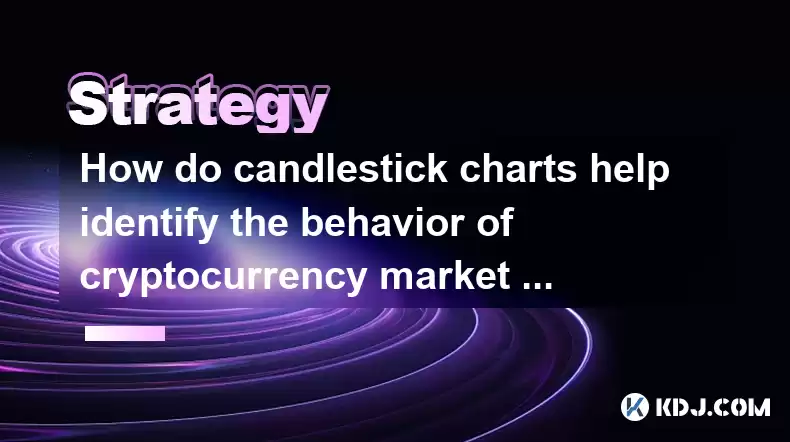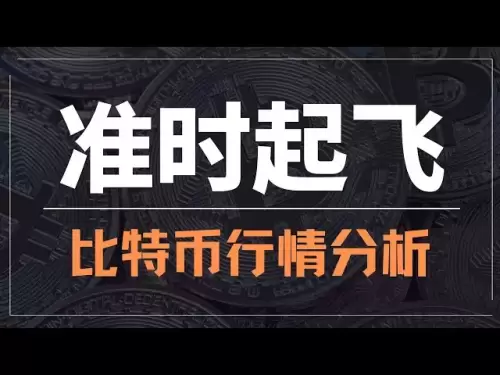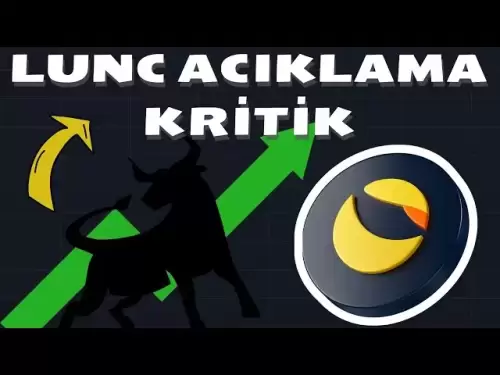-
 Bitcoin
Bitcoin $117300
1.99% -
 Ethereum
Ethereum $3884
5.89% -
 XRP
XRP $3.268
9.33% -
 Tether USDt
Tether USDt $1.000
0.02% -
 BNB
BNB $783.0
1.78% -
 Solana
Solana $173.6
3.51% -
 USDC
USDC $0.9999
0.00% -
 Dogecoin
Dogecoin $0.2193
7.00% -
 TRON
TRON $0.3380
0.30% -
 Cardano
Cardano $0.7769
5.08% -
 Stellar
Stellar $0.4350
9.36% -
 Hyperliquid
Hyperliquid $40.23
5.78% -
 Sui
Sui $3.739
6.95% -
 Chainlink
Chainlink $18.30
9.46% -
 Bitcoin Cash
Bitcoin Cash $581.7
2.11% -
 Hedera
Hedera $0.2577
5.51% -
 Ethena USDe
Ethena USDe $1.001
0.00% -
 Avalanche
Avalanche $23.08
4.23% -
 Litecoin
Litecoin $121.7
2.24% -
 UNUS SED LEO
UNUS SED LEO $8.962
-0.34% -
 Toncoin
Toncoin $3.332
1.36% -
 Shiba Inu
Shiba Inu $0.00001273
3.39% -
 Uniswap
Uniswap $10.35
6.84% -
 Polkadot
Polkadot $3.818
4.01% -
 Dai
Dai $1.000
0.01% -
 Bitget Token
Bitget Token $4.446
2.13% -
 Cronos
Cronos $0.1491
4.96% -
 Monero
Monero $255.4
-9.78% -
 Pepe
Pepe $0.00001099
4.80% -
 Aave
Aave $284.0
8.01%
How do candlestick charts help identify the behavior of cryptocurrency market makers?
Candlestick charts reveal market maker actions through patterns like hammers, dojis, and engulfing signals, but should be used with volume and other indicators for accurate analysis.
Apr 06, 2025 at 12:07 am

Deciphering Market Maker Actions Through Candlestick Charts
Candlestick charts, while seemingly simple, offer a wealth of information about price action, including potential insights into the activities of cryptocurrency market makers. These powerful visual tools reveal information about buying and selling pressure, which can be indicative of larger market manipulations or strategic moves by significant players. Understanding how to interpret these signals can provide a significant edge in navigating the volatile cryptocurrency market.
One key aspect is understanding the relationship between the candlestick's body and wicks. A long green candlestick body signifies strong buying pressure, suggesting market makers might be accumulating assets. Conversely, a long red candlestick body indicates significant selling pressure, possibly indicating distribution by market makers. The wicks, or shadows, extending above and below the body, represent price exploration beyond the opening and closing prices. Long upper wicks, for instance, suggest resistance to upward price movement, hinting at potential selling pressure from market makers.
Identifying potential manipulation attempts requires looking at patterns. Hammer and hanging man patterns, for example, can be indicative of market maker activity. A hammer, a bullish reversal pattern, shows a long lower wick with a small body, suggesting a strong buying pressure that pushed the price back up after a downward move. Conversely, a hanging man, a bearish reversal pattern, displays a similar structure but indicates potential selling pressure after an upward trend. These patterns, however, should not be interpreted in isolation.
Doji candlesticks are another crucial element. These candlesticks have opening and closing prices that are nearly identical, creating a small or no body. Dojis often signify indecision in the market, a potential battleground between buyers and sellers, and can be a signal of market maker manipulation or a period of consolidation before a significant move. The context surrounding the Doji, like its position within a larger trend, is crucial for accurate interpretation.
Analyzing candlestick patterns in conjunction with volume data enhances the accuracy of identifying market maker behavior. A large volume accompanying a significant candlestick indicates strong conviction behind the price movement, suggesting a larger player is likely involved. Conversely, a large candlestick with low volume could indicate a manipulation attempt by market makers to create a false sense of momentum.
Market makers often use engulfing patterns to signal their intent. A bullish engulfing pattern occurs when a large green candlestick completely engulfs the previous red candlestick, suggesting a shift in market sentiment and potential buying pressure. Conversely, a bearish engulfing pattern has a large red candlestick engulfing the previous green one, signaling potential selling pressure. These patterns, however, are more reliable when combined with other confirming indicators.
Understanding the context is vital. Consider the broader market trend. A hammer candlestick in a strong uptrend might hold less significance than the same pattern in a downtrend. Furthermore, looking at the time frame is crucial. A pattern that appears significant on a daily chart might be less important on a 1-minute chart. Always analyze multiple timeframes to gain a holistic perspective.
The identification of key support and resistance levels is crucial in understanding market maker behavior. Market makers often manipulate price around these levels to either accumulate or distribute assets. Observing how the price interacts with these levels, particularly during significant candlestick formations, can provide valuable insights into their strategies.
Specific candlestick patterns, while informative, are not foolproof indicators of market maker activity. They should be used in conjunction with other technical analysis tools, such as moving averages, volume indicators, and other forms of chart analysis. It's essential to develop a comprehensive trading strategy that incorporates multiple indicators and risk management techniques.
Furthermore, the use of candlestick patterns alone should not be the sole basis for trading decisions. Fundamental analysis, news events, and overall market sentiment should also be considered. A holistic approach to market analysis, integrating technical and fundamental elements, is crucial for making informed decisions.
Remember, recognizing market maker behavior isn't about predicting the future with certainty. It's about improving your understanding of market dynamics and making more informed trading decisions. Always practice risk management and trade responsibly.
Frequently Asked Questions
Q: Can candlestick charts alone definitively identify market maker behavior?
A: No. Candlestick patterns are valuable tools, but they should be used in conjunction with other technical indicators and fundamental analysis for a more comprehensive understanding.
Q: What other indicators should be used alongside candlestick charts to analyze market maker behavior?
A: Volume indicators, moving averages, Relative Strength Index (RSI), and other technical indicators provide additional context and confirmation of potential market maker activity.
Q: Are all candlestick patterns indicative of market maker manipulation?
A: No. Many candlestick patterns simply reflect the natural ebb and flow of buying and selling pressure. Only specific patterns, combined with other indicators and context, suggest potential manipulation.
Q: How can I improve my ability to interpret candlestick charts in relation to market maker activity?
A: Practice, study, and experience are key. Analyze historical charts, backtest strategies, and learn from your successes and mistakes. Consider using educational resources and charting platforms.
Q: Is it possible to consistently profit from identifying market maker behavior?
A: No, predicting market movements with certainty is impossible. Identifying potential market maker actions can improve trading decisions, but it doesn't guarantee profits. Risk management is crucial.
Disclaimer:info@kdj.com
The information provided is not trading advice. kdj.com does not assume any responsibility for any investments made based on the information provided in this article. Cryptocurrencies are highly volatile and it is highly recommended that you invest with caution after thorough research!
If you believe that the content used on this website infringes your copyright, please contact us immediately (info@kdj.com) and we will delete it promptly.
- Cold Wallet Crypto in 2025: The Future is Now, Ya'll
- 2025-08-08 05:10:13
- MAGACOIN, SOL, and ADA: A Tale of Shifting Tides in Crypto
- 2025-08-08 05:10:13
- SHIB Price, PEPE, and the Memecoin Supercycle: Who Will Reign Supreme?
- 2025-08-08 05:50:12
- Pudgy Penguins Price Prediction: Google Trends & Breakout Signals
- 2025-08-08 05:50:12
- UAE Crypto Regulation: SCA and VARA Unite to Streamline the Future of Digital Assets
- 2025-08-08 05:55:48
- MAGACOIN Finance: The Presale Phenomenon Rocking the Crypto World
- 2025-08-08 05:55:48
Related knowledge

How to avoid common crypto investment mistakes?
Jul 13,2025 at 01:35am
Understanding the Risks of Crypto InvestmentInvesting in cryptocurrency can be highly rewarding, but it also comes with significant risks. One of the ...

What is a long-short crypto strategy?
Jul 15,2025 at 10:56am
Understanding the Basics of a Long-Short Crypto StrategyA long-short crypto strategy is an investment approach where traders simultaneously take long ...

What is a long-short crypto strategy?
Jul 11,2025 at 01:28pm
Understanding the Basics of Long-Short Crypto StrategyA long-short crypto strategy is an investment approach where traders take both long and short po...

How to use the RSI indicator for crypto?
Jul 12,2025 at 03:56pm
Understanding the RSI Indicator in Cryptocurrency TradingThe Relative Strength Index (RSI) is a momentum oscillator used to measure the speed and chan...

Is copy trading a good strategy for crypto beginners?
Jul 12,2025 at 08:28am
Understanding Copy Trading in the Cryptocurrency MarketCopy trading is a strategy where novice traders replicate the trades of experienced investors a...

How to build a crypto portfolio with $1000?
Jul 13,2025 at 08:14pm
Understanding the Basics of Cryptocurrency InvestmentBuilding a crypto portfolio with $1000 starts with understanding the fundamentals of cryptocurren...

How to avoid common crypto investment mistakes?
Jul 13,2025 at 01:35am
Understanding the Risks of Crypto InvestmentInvesting in cryptocurrency can be highly rewarding, but it also comes with significant risks. One of the ...

What is a long-short crypto strategy?
Jul 15,2025 at 10:56am
Understanding the Basics of a Long-Short Crypto StrategyA long-short crypto strategy is an investment approach where traders simultaneously take long ...

What is a long-short crypto strategy?
Jul 11,2025 at 01:28pm
Understanding the Basics of Long-Short Crypto StrategyA long-short crypto strategy is an investment approach where traders take both long and short po...

How to use the RSI indicator for crypto?
Jul 12,2025 at 03:56pm
Understanding the RSI Indicator in Cryptocurrency TradingThe Relative Strength Index (RSI) is a momentum oscillator used to measure the speed and chan...

Is copy trading a good strategy for crypto beginners?
Jul 12,2025 at 08:28am
Understanding Copy Trading in the Cryptocurrency MarketCopy trading is a strategy where novice traders replicate the trades of experienced investors a...

How to build a crypto portfolio with $1000?
Jul 13,2025 at 08:14pm
Understanding the Basics of Cryptocurrency InvestmentBuilding a crypto portfolio with $1000 starts with understanding the fundamentals of cryptocurren...
See all articles

























































































